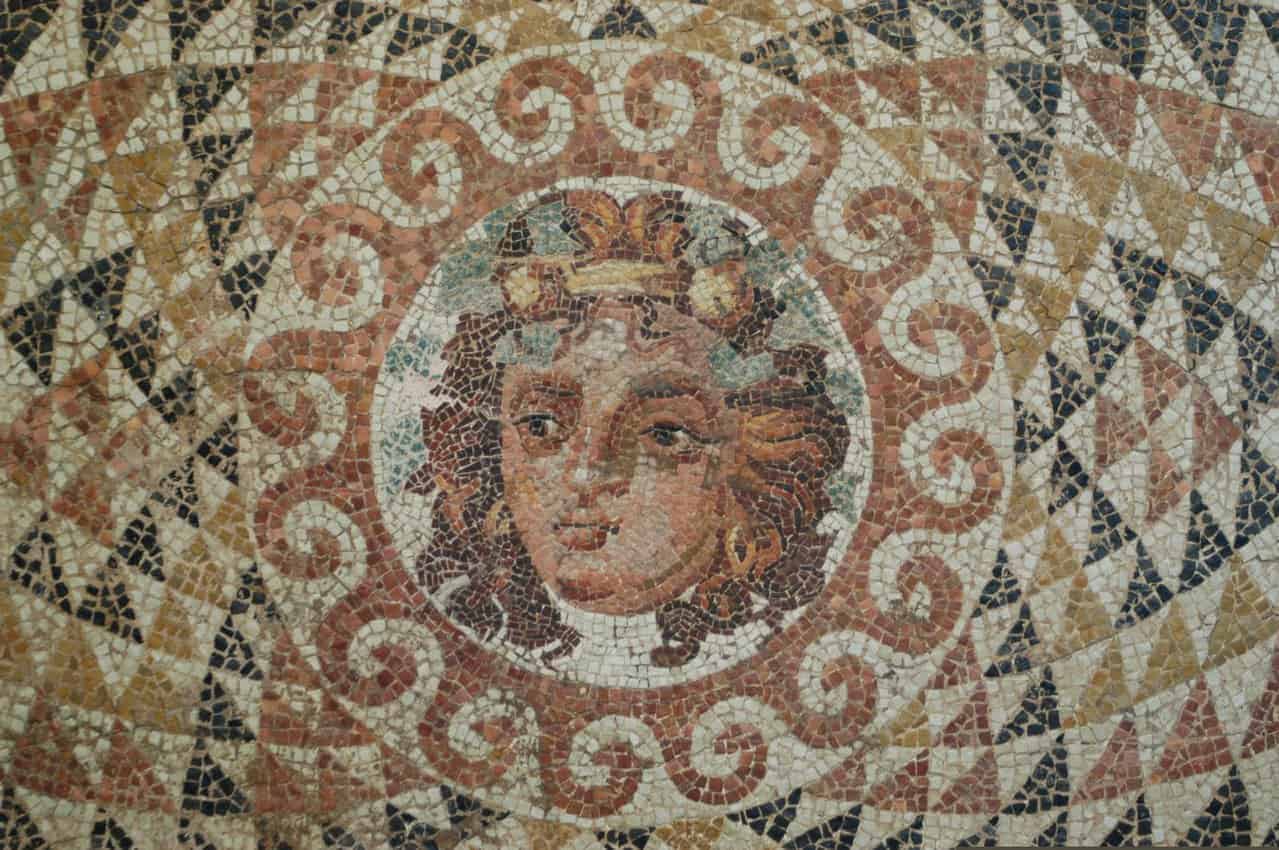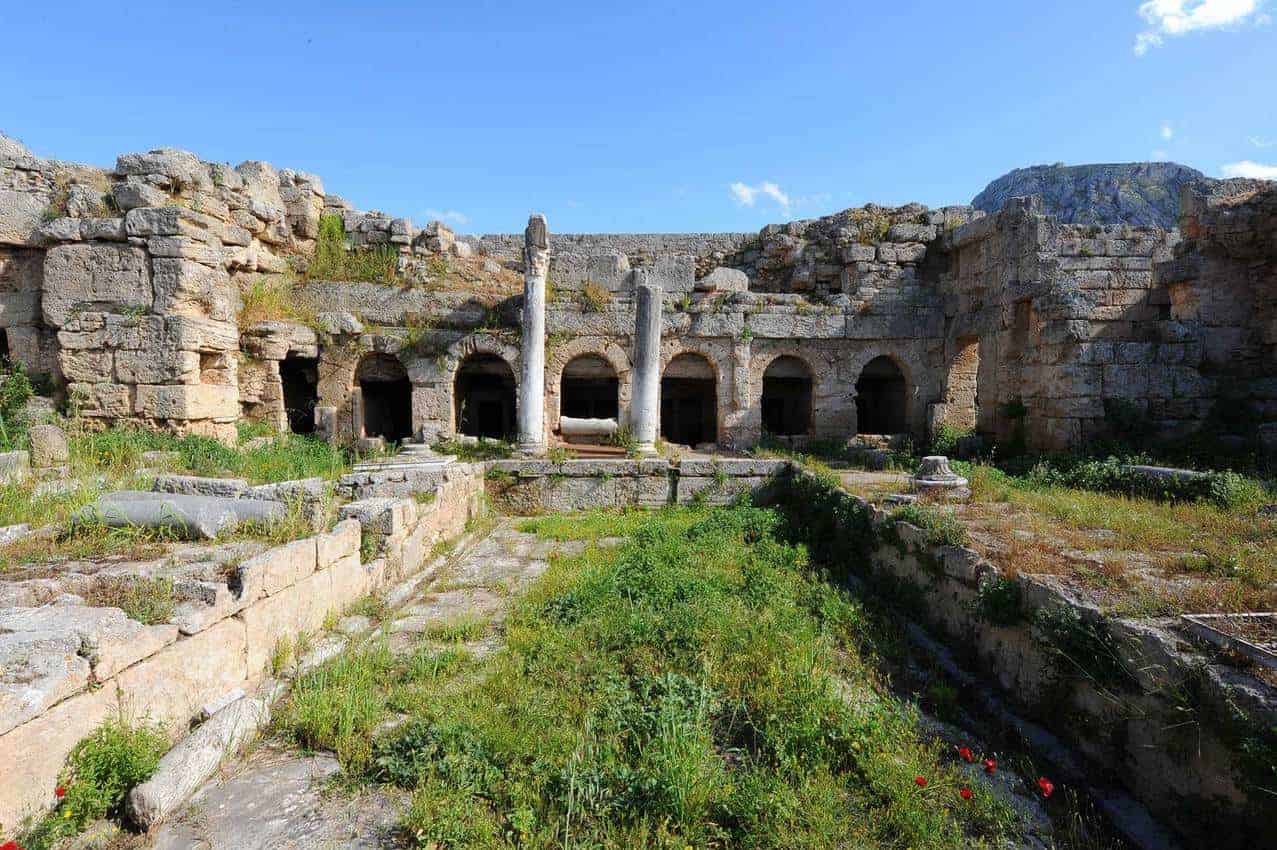
The Foundations of Corinth, an Earthquake-Prone Ancient City
By Gary Van Haas

Corinth isn’t exactly one of the most happening spots to visit in Greece, but in ancient times it was the place to be as a busy, thriving trade center.
Today, the city of 58,000 is the second-most populous municipality in the Peloponnese Region after Kalamata.
High Fault Zone
The problem is that Corinth is situated over a high-fault zone where over many millennia it was subject to more than its share of major earthquakes.
In fact, the town today itself was totally racked and destroyed by a deadly quake in 1853, and then again by another in 1928.
But don’t get spooked just yet because in order to appreciate this marvelous little piece of Hellenic antiquity, we must go back and look into its rich, exquisite past.
Initiation of a Canal
The beginnings of ancient Corinth date back to the 6th century BC where it was once considered one of Greece’s wealthiest cities.
Owing to its strategic location on the Isthmus, with two well-situated ports on both sides of the Aegean and Ionian, it provided an ideal center for trade throughout the Mediterranean.
The original idea of digging a massive canal through the Isthmus is said to have come from the brutal tyrant, Periander, and by the shear enormity of this project, failed in his first attempt.

Afterward, he simply settled on building a paved slippage-way in which hundreds of stout-hearted men pulled small boats and ships across planks and rollers. By the sound of it, it must have been a huge undertaking!
Corinth endured intact throughout the Peloponnesian wars and also managed to survive under the suppressive rule of the Macedonians.
I’m sure Phillip of Macedonia wasn’t a whole lot of fun ruling over them, but somehow the Corinthian people survived it.
But Corinth wasn’t invincible and was eventually sacked by Romans in 146 BC after a murderous uprising and revolt. Then in 44 BC, the illustrious Julius Caesar settled in and took a keen interest in the strategic location of the port.
During his reign, he had the city completely rebuilt, and after this, it flourished again as a thriving trade center for Romans.
The Corinth Canal Dig
Many other Greco-Roman leaders including Alexander the Great and Caligula played with the idea of building a proper canal through Corinth, and strangely enough, it took the maniacal emperor, Nero to finally put the plan into action.
It is claimed that Nero himself was present at the opening excavation ceremonies and struck the first dig into the soil with a golden pickaxe. After that futile little gesture, he turned the monumental task of digging out the canal over to 6,000 Jewish slaves who literally did the dirty work.
Many poor souls lost their lives in the excavation of the project. Luckily for the slaves, it was brought to a halt by invading Gaul hordes swooping down on Corinth from the north.
Many centuries passed, and work on the canal was halted and not begun again until 1883 when a dedicated team of French engineers arrived in Corinth.
They took on the enormous canal undertaking and the project wasn’t completed until ten laborious years later in 1893. The canal is 6.3 km (3.9 miles) long and has a water depth of 8 meters (26 feet);
Earthquake Prone
Since quakes have always been a problem in the area, and in ancient times, it eventually forced the Corinthians to relocate to the nearby area called, Acrocorinth. This was a much more stable ground area with solid limestone foundations, which also provided strong building materials for the city’s first fortifications.
Over the centuries a considerable fortress was established there, built by a conglomeration of Romans, Byzantines, Franks, Venetians, and Turks.
The ruins in Acrocorinth reflect these influences, and if you look closely, you’ll still find remnants of Turkish ramparts, Byzantine chapels, and mosques.

Scenes Around Corinth
It’s certainly fair to say there’s not much to see in the way of a city center, and you may also be a little disappointed when you get a glimpse of its stark modern capital, splayed with an array of unsightly concrete buildings.
But don’t let that get you down because there is an upside to this story; For one thing, there’s a charming little harbor area to appreciate, and it’s a nice place to spend the night if you intend on visiting the nearby ruins.
While you’re there you may want to check out the cozy little Folkloric Museum located on the east side of the wharf.
There you’ll have the opportunity to view a splendid assortment of island costumes from the past as well as see attractive embroidery pieces, metalwork in gold and silver, and a magnificent collection of wood carvings relating to secular and ecclesiastical subjects.
Ancient Corinth
Strolling around the ancient site of Corinth itself, you’ll soon discover a small museum which houses a unique collection of statues, mosaics, figurines, reliefs, and friezes.
The ruins on the site date mostly from Roman times, however, there are a few exceptions found in the 5th century BC Doric columns at the Temple of Apollo.
Walking south along the path, you run into the ancient Agora and stoa. It was here on this very spot, that Phillip II ordered city officials to swear allegiance to him under the threat of decapitation. Hey, who wanted to mess with this guy!
Ever seen Phillip’s face with one eye missing? In the middle row of shops near the stoa is a marble platform known as the bema, where Roman officials stood making decrees or giving lengthy speeches, and no doubt boring the poor citizens to death!

Julian Basilica
To the east of the Agora, you’ll pass the Julian Basilica, and walking north you come upon the Lower Perine Fountain, where according to Greek mythology, Perine cried so much after her son Kenchrias was killed by Artemis, that the gods intervened and decided to save the precious tears by turning her into a fountain.
In reality, of course, the fountain was really a natural spring used by Corinthians for thousands of years. To the west of the fountain is the Lecheon Road, which was the main thoroughfare to the Port of Lecheon.
Looking to the right side of this road, you’ll see the Parabolas of Apollo, an open courtyard with Ionic columns, and near this, you will find the ancient public latrines, many of which are still visible today. But please, whatever you do, if you have to go, don’t try using these!

St Paul & the Beloved Brothel
Scholars and historians have noted quite an interesting tale during Roman rule in Corinth, where it is said a scandalous temple once existed, which was dedicated to the Love Goddess Aphrodite.

The story continues to mention that many of the city’s respected businessmen and top Roman officials came to the temple to pay homage to the great Love Goddess, but supposedly after their solemn sacraments, these men and officials solicited the services of so-called `sacred prostitutes’ working on the same premises!
This convenient arrangement apparently went on and worked quite well for centuries — That is until the uptight Christian Apostle St Paul arrived on the scene and spoiled everything.
When word finally got back to him what was going on in the temple, it seems that he went bonkers, flew into a rage, and spent the next eighteen months there preaching against Rome’s wicked, wicked ways. No doubt Errol Flynn would have been proud of those guys!
Corinth Travel Tips
Municipal Tourist Office: tel. +30 (27410) 23282
Getting There
Trains and buses run on a regular basis to Corinth, or in summer you can take a cruise through the breathtaking canal to the Saronic islands. Greek Railways (OSE) operates a train from Corinth to Athens hourly. Tickets cost 5€ – 7€ and the journey takes 1 h 7 min.
Alternatively, KTEL Korinthias operates a bus from Corinth to Athens every 4 hours. Tickets cost 6€ – 9€ and the journey takes 1 h 15 min.

Lodging- Diolkos Studios (4 stars)
Posidonos 99, Loutraki 203 00.
Tel.( 27440) 66738,
e-mail: diolkos.studios@gmail.com.
Overlooking the Gulf of Corinth and surrounded by mountains, this simple all-suite hotel is a 1-minute walk from the closest beach and 7 km from Corinth train station; Ephira Hotel (4 stars) at Eth. Antistaseos 52, Korinthos 201 00. Tel: (27410) 22434.
Set on a bustling street, this unassuming hotel is 8 km from the Archaeological Museum of Ancient Corinth, and 9 km from the ancient Temple of Apollo.
Eating- Esperos Ichtis Fish Tavern
Derveni, Corinth,
Cell. 694 575 4055.
This fish tavern is a classic Greek fish place where you can eat local specialties and fresh fish. The grilled octopus is always on the menu and is soft and juicy.
Marinos Restaurant, Argous Ancient Corinth. Tel. (27410) 31130. Course after course of authentic country Greek cuisine complete with cheeses, salads, meatballs, souvlaki, the most delicious combinations of local herbs and olive oils to please any palate.
 Gary Van Haas worked for many years as a feature writer for The Athens News, International Herald Tribune, New York Times, Los Angeles Times, Time and Newsweek Magazines. His books can be found on Amazon.com
Gary Van Haas worked for many years as a feature writer for The Athens News, International Herald Tribune, New York Times, Los Angeles Times, Time and Newsweek Magazines. His books can be found on Amazon.com
- Camino Tales: Wine and Memories in Galicia, Spain - July 25, 2024
- Beluga Hunting in Norway - July 20, 2024
- Costa Rica: A Rainforest Chocolate Tour - July 18, 2024






Great article. Keep it up. Wish you the best of luck with your next article.